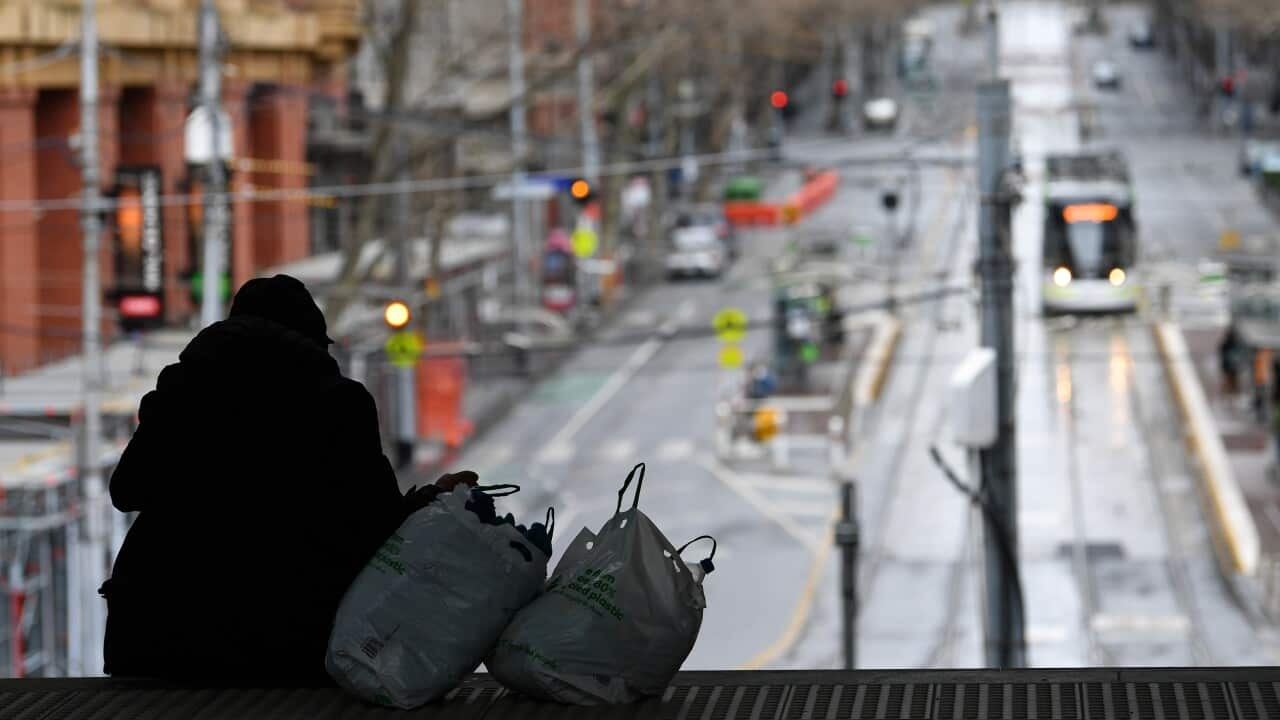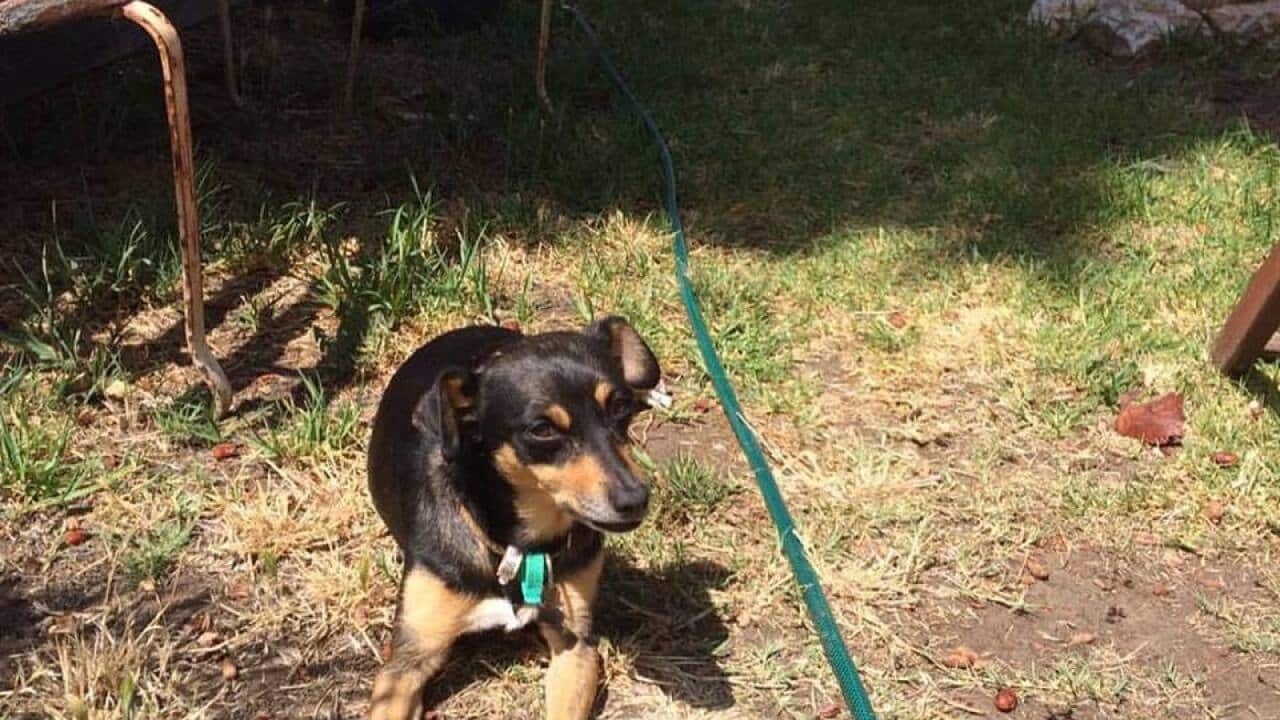Key Points
- Jessica* spoke with SBS News about the challenges she's faced since becoming homeless.
- Just a year ago, Jessica had been renting a three bedroom home in Perth's eastern suburbs.
- The head of Anglicare says her service is seeing whole families living in cars and more people rough sleeping.
This is what the rental crisis looks like in Australian cities with the lowest vacancy rates.
The rental vacancy rate in Perth and Adelaide , meaning the current rental market is the tightest it has ever been.
Just a tiny percentage of rentals in these cities are available at any one time.
According to Domain, Australia's vacancy rate is steady at 0.9 per cent for the second month in a row, but for those unable to secure stable accommodation, life is anything but stable.
Desperate measures
This makeshift shelter in a car park near a local playground in the northern suburbs of Perth reflects the desperate situation some of those unable to secure a rental property are currently in.
For a handful of nights, three people and a small dog slept here, in suburban Perth, 25 kilometres from the CBD, next to public tennis courts and a playground.
A 38-year-old woman, who SBS is calling Jessica, was staying there with her partner and her 18-year-old daughter.
The makeshift shelter had been created using the shell of an old tiny home by covering it with materials that had mostly been salvaged.
Increasing rents in an unstable market
Just a year ago, Jessica had been renting a three-bedroom home in Perth's eastern suburbs.
When she moved in, the rent was $350, but within a year she was paying $500 a week. In January this year, the landlord decided to move back into the home, so she was forced to find an alternative.
She managed to find some short-term solutions, making arrangements to help out a friend in exchange for accommodation on a temporary basis.
When that came to an end, she and her partner found there were no rentals available that they could afford.
"We couldn't afford more than $350 a week and if there is anything near that, they are snapped up," Jessica said.
The average price of a rental in Perth is currently $580, having increased by 16 per cent in the past year.
With Jessica reliant on a disability pension due to an arthritis condition and her partner struggling to secure a permanent job, she said their income goes towards getting by on a day-to-day basis.
A report compiled earlier this year found less than 1 per cent of available rentals were affordable for a person on age or disability support pensions. At the time, that equated to 66 properties across the country.
Insecure accommodation
While staying in the car park, Jessica said she and her family used the public toilets at the nearby park and were able to charge their phones thanks to an extension cord plugged in at a neighbouring property.
They showered at the local leisure centre during the day but worried about leaving to do so, as all of their possessions were with them in their shelter which was not secure.
Jessica said not having secure accommodation meant she had to meet everyday needs as they came up, admitting it meant she was unable to be a savvy spender.
"We don't have a fridge so you can't store things, you just have to buy food as you go," she said.
The car park was just one of the places Jessica, her partner and daughter have slept in the past month.
After being connected with homelessness services, the family members were provided crisis accommodation for a couple of weeks.
Jessica said while there may have been possible longer term accommodation options available beyond those couple of weeks, she would not have been able to keep her dog.

Having a dog makes it more difficult for Jessica to access crisis accommodation as she does not want to give up her pet. Source: Supplied
"I don't want to separate from my dog, he's my rock, he's like a therapy dog to me," she said.
So for the past three weeks, Jessica and her partner have been staying with friends.
But their struggle to get by continues.
When contacted by SBS News this week, Jessica said she and her partner would be moving on again soon.
"We leave for a tent on the weekend," she said via text message.
"Still deciding where to set it up, deciding if we should find a property to stay on and be self-sufficient or pay the caravan park fees of $50 to $60 a night."
More Australians sleeping rough
Anglicare Australia executive director Kasy Chambers said homelessness and rough sleeping were becoming more prominent within suburban Australia.
"We're seeing whole families living in cars and more and more people rough sleeping. That's incredibly dangerous," she said.
"People who have been homeless for any period of time have a much lower life expectancy than those of us who are lucky enough to live in houses.
"It's just incredible this is happening in what is a first world country."
Chambers, who has experience working in frontline homelessness services said in the past homelessness was usually one part of greater issues.
"A few years ago and it was usually for people who also have a mental health issue or substance abuse issue or have experienced domestic violence, it was always quite complicated," she said.
"But we are seeing more and more people now, where the only thing that's caused homelessness is the lack of an affordable house," Chambers said.
The most recent statistics by 5.2 per cent between 2016 and 2021.
While there were 122,494 Australians experiencing homelessness during the last Census, that number is likely now even higher.
The increasing cost of living which has seen record inflation since those numbers were recorded has put a growing number of people under financial stress.














